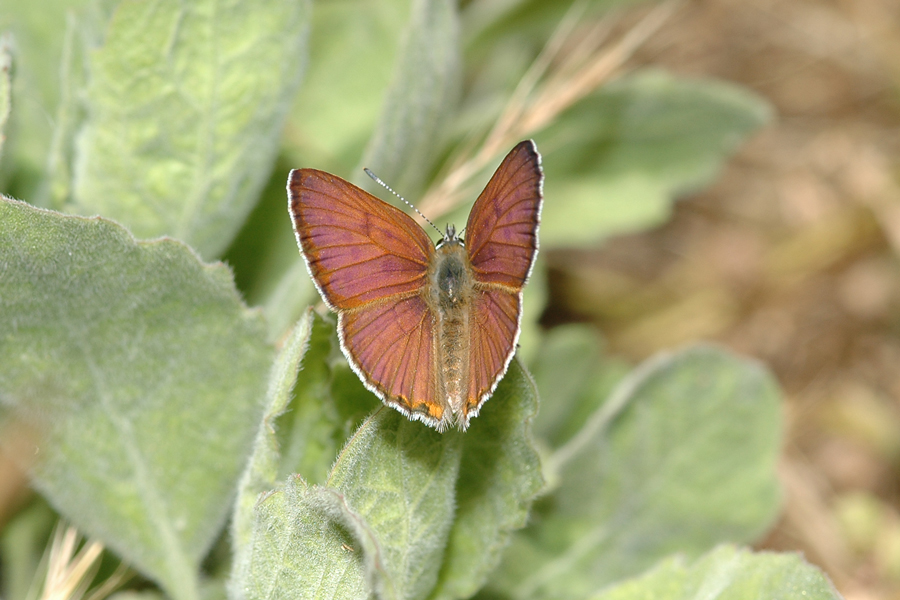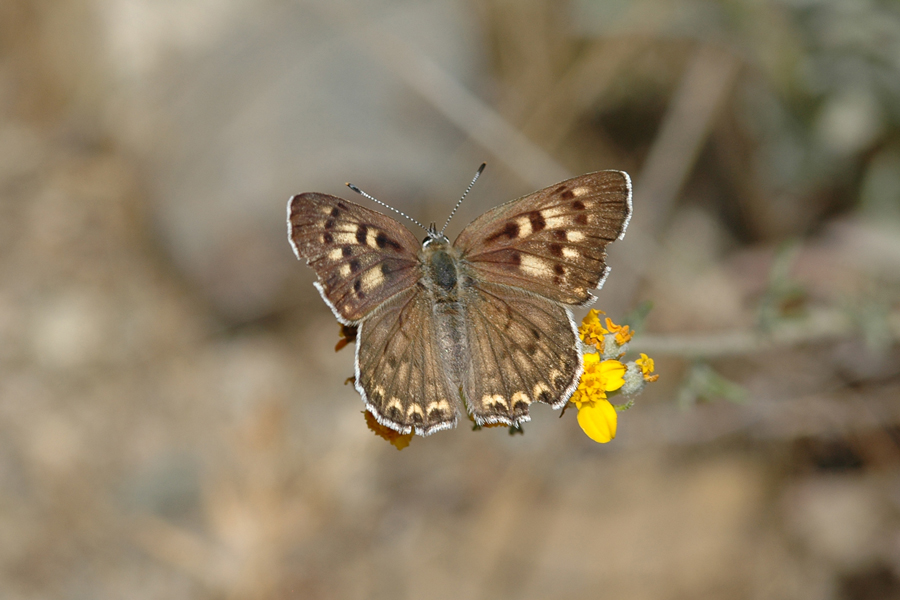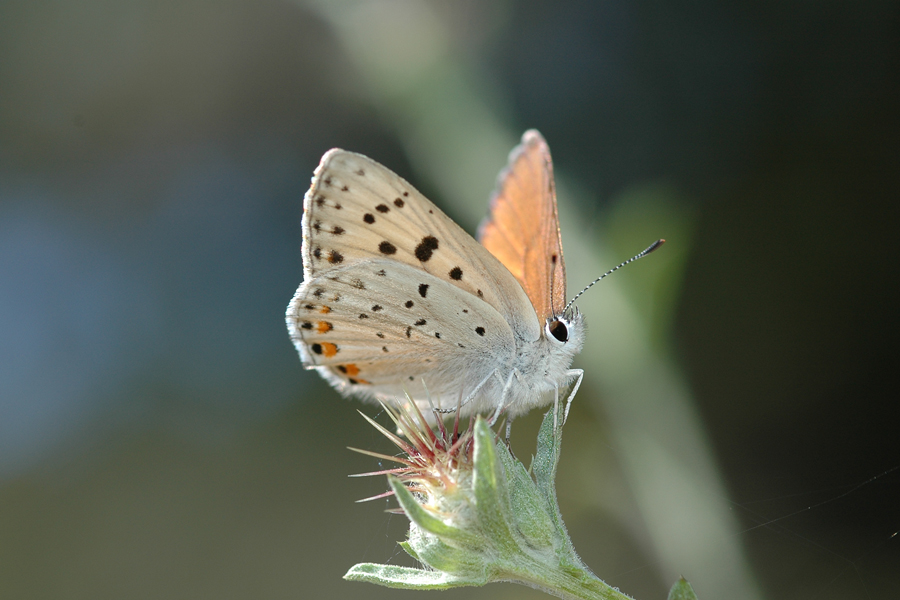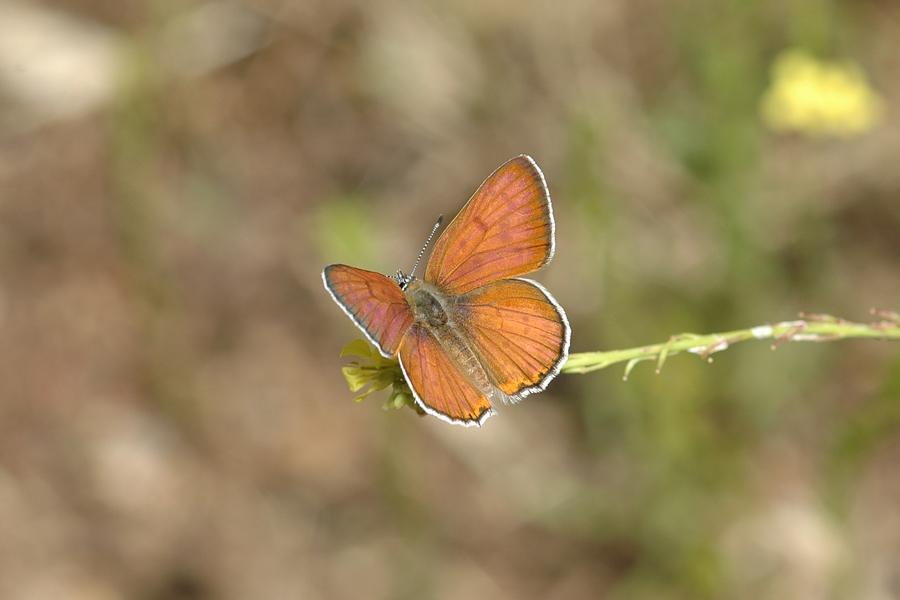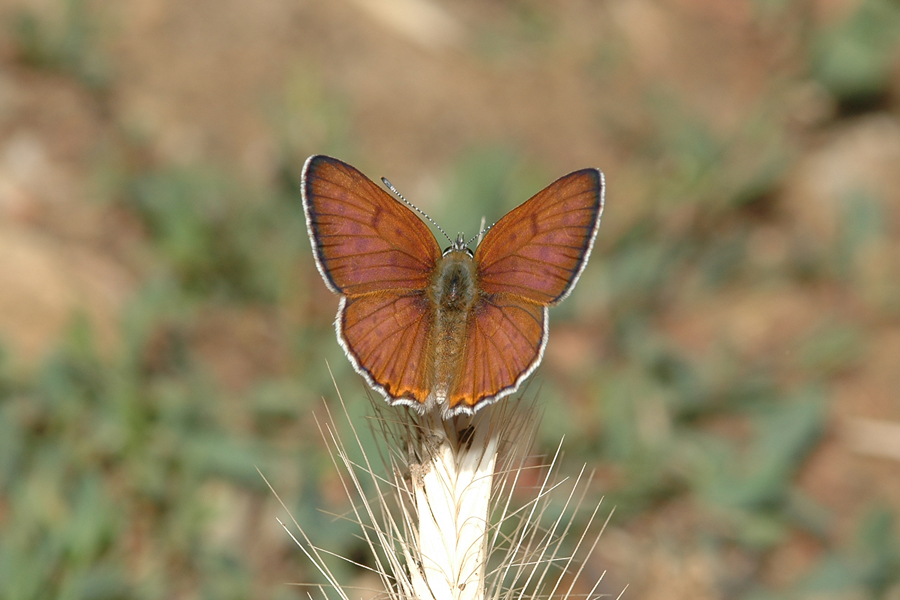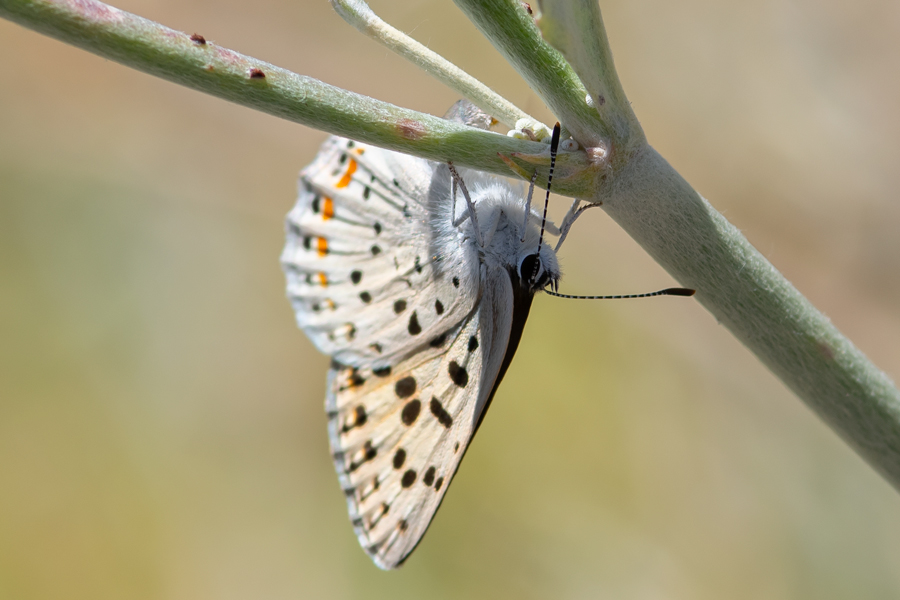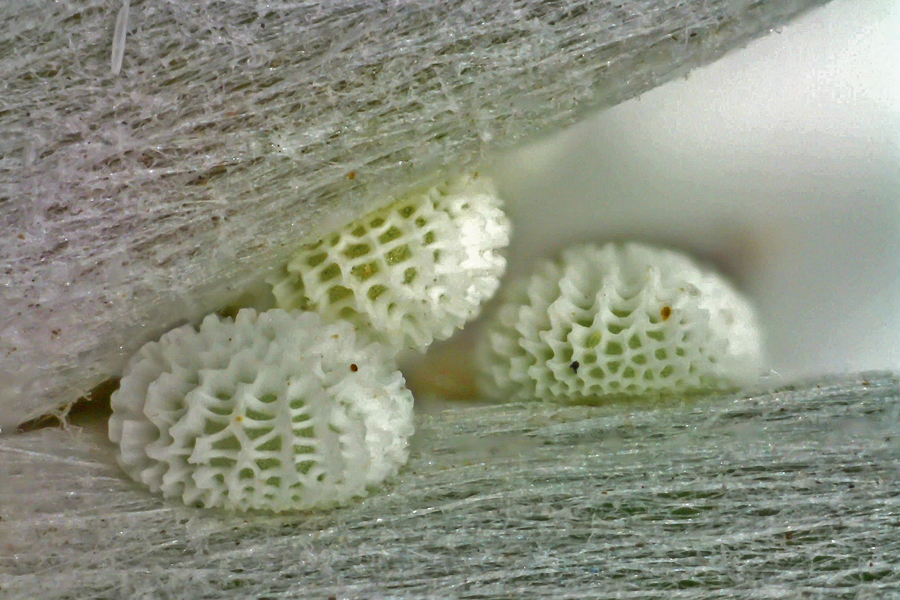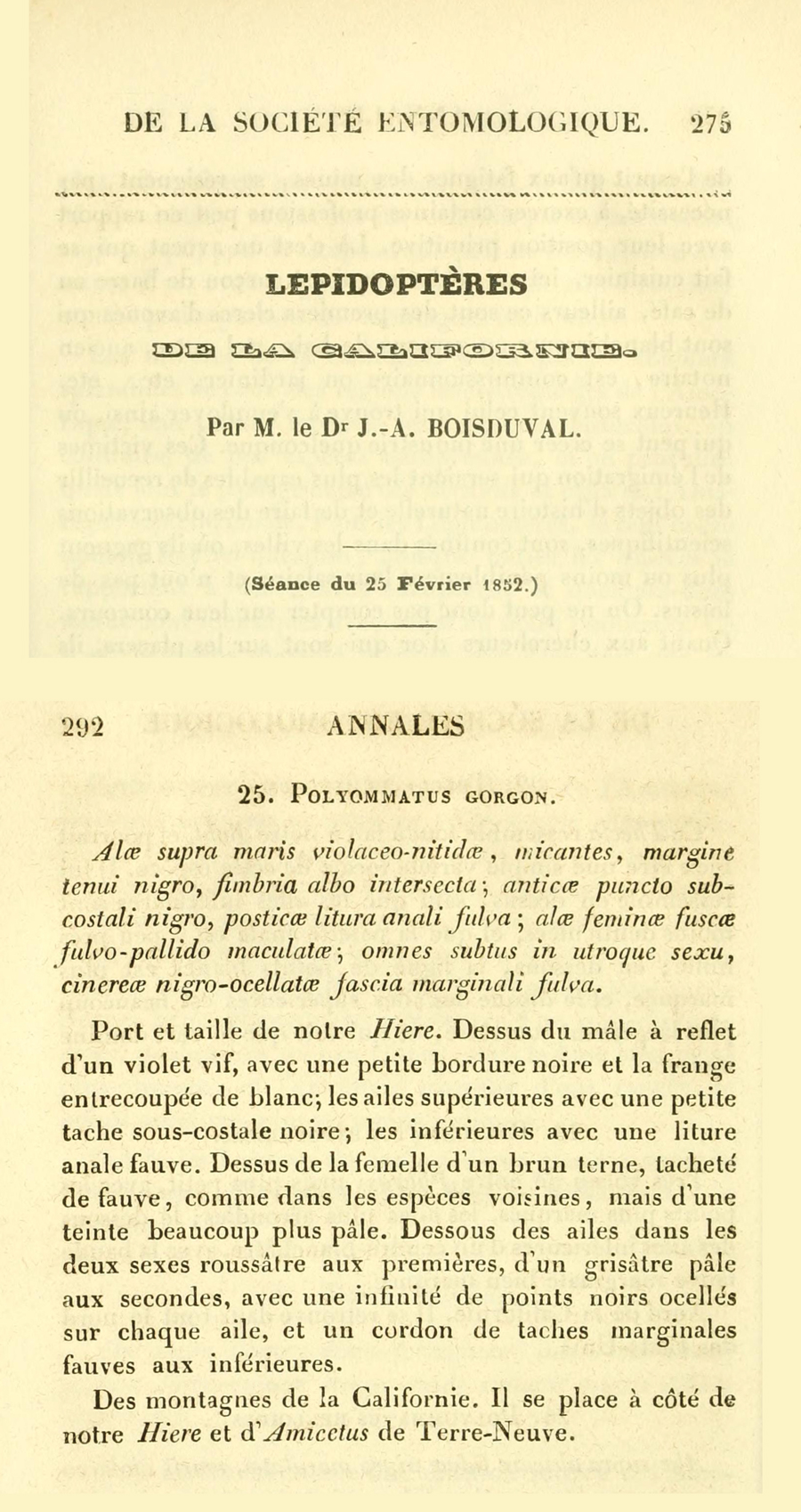Tharsalea gorgon gorgon
Gorgon Copper
Another early-to-mid-summer copper that uses a member of the Polygonaceae family, in this case longstem buckwheat, Eriogonum elongatum. Adults are gorgeous when fresh; males have a purplish sheen that yields to light brown as they age. The sexual dimorphism (males and females looking different) is extreme. They fly in a single brood, and females place eggs in the nodes of the buckwheat; often there are several bunched together as the photos below shows. As with our other coppers, the egg is the overwintering stage, so caterpillars would feed preceeding flights.
This is another butterfly collected by Pierre Lorquin during the gold rush and sent to Paris, where it was described by Prof. Boisduval in 1852.
I found several fresh male Gorgon coppers - Tharsalea gorgon gorgon - at Malibu Creek May 23, 2006.
This female gorgon was at a spot with lots of host Eriogonum elongatum up San Gabriel Canyon on the Rincon OHV, June 9, 2007. As the name suggests, looking at female gorgons may turn you into stone, so be careful.
Ventral of a male Gorgon copper at Malibu Creek May 23, 2006.
Another fresh male Tharsalea gorgon gorgon. Malibu Creek May 23, 2006.
One more photogenic male from Malibu Creek, also May 23, 2006.
This female added an egg to a node of the larval food plant, Eriogonum elongatum. Finding a half-dozen isn't unusual. This is from the Volcan Mountain Wilderness Reserve. July 11th, 2023.
Eggs on the longstem buckwheat plant, highly magnified.
The original description by Boisduval in 1852.
©Dennis Walker
